
Resources
Browse our full library of in-depth resources and publications
The PacWastePlus programme team is committed to producing meaningful and valuable publications and resources that provides guidance for improving waste management in the Pacific
Search
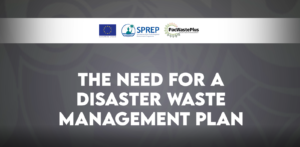
Video Resource
Animated Video 1: The Need For A Disaster Management Plan
The SPREP implemented and European Union funded PacWaste Plus programme recognises that Pacific Island countries are prone to disaster and climate risks, such as cyclones, landslides, flooding, drought, earthquakes and even tsunamis. Natural disasters are associated with the generation of large volumes of waste, damaging waste management facilities, and disruption to waste services, thus, posing a risk to public health through direct or vector-induced exposure.
The PacWaste Plus Team is implementing a regional project to establish Practitioner Guidelines that will assist Pacific Island countries to mainstream disaster waste management into national disaster management frameworks. The programme engaged the University of Newcastle to establish the following guidelines; Template for National Disaster Management Plan with Instruction Guideline, Guideline on the establishment of Environment Management Cluster and Standard Estimation Methodology on calculating volume of disaster waste.
PacWaste Plus has developed the following animation video as a part of a series, that inform users of the developed guidelines:
Animated Video 1: The Need to have a National Disaster Management Plan
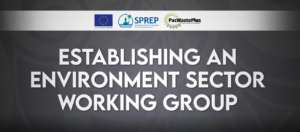
Video Resource
Animated Video 2: Establishing an Environment Sector Working Group
The SPREP implemented and European Union funded PacWaste Plus programme recognises that Pacific Island countries are prone to disaster and climate risks, such as cyclones, landslides, flooding, drought, earthquakes and even tsunamis. Natural disasters are associated with the generation of large volumes of waste, damaging waste management facilities, and disruption to waste services, thus, posing a risk to public health through direct or vector-induced exposure.
The PacWaste Plus Team is implementing a regional project to establish Practitioner Guidelines that will assist Pacific Island countries to mainstream disaster waste management into national disaster management frameworks. The programme engaged the University of Newcastle to establish the following guidelines; Template for National Disaster Management Plan with Instruction Guideline, Guideline on the establishment of Environment Management Cluster and Standard Estimation Methodology on calculating volume of disaster waste.
PacWaste Plus has developed the following animation video as a part of a series, that inform users of the developed guidelines:
Animated Video 2: Establishing an Environment Sector Working Group
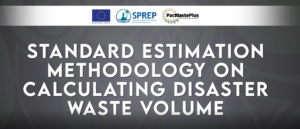
Video Resource
Animated Video 3: Standard Estimation Methodology on Calculating Disaster Waste Volume
The SPREP implemented and European Union funded PacWaste Plus programme recognises that Pacific Island countries are prone to disaster and climate risks, such as cyclones, landslides, flooding, drought, earthquakes and even tsunamis. Natural disasters are associated with the generation of large volumes of waste, damaging waste management facilities, and disruption to waste services, thus, posing a risk to public health through direct or vector-induced exposure.
The PacWaste Plus Team is implementing a regional project to establish Practitioner Guidelines that will assist Pacific Island countries to mainstream disaster waste management into national disaster management frameworks. The programme engaged the University of Newcastle to establish the following guidelines; Template for National Disaster Management Plan with Instruction Guideline, Guideline on the establishment of Environment Management Cluster and Standard Estimation Methodology on calculating volume of disaster waste.
PacWaste Plus has developed the following animation video as a part of a series, that inform users of the developed guidelines:
Animated Video 3: Calculating disaster waste volume and how to use the Standard Estimation Methodology on calculating disaster waste volume.
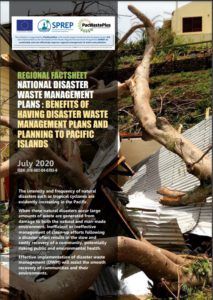
Factsheet
National disaster Waste Management Plans: Benefits of having disaster waste management plans and planning to Pacific islands
The intensity and frequency of natural disasters such as tropical cyclones are evidently increasing in the Pacific. When these natural disasters occur large amounts of waste are generated from damage to both the natural and man-made environment. Inefficient or ineffective management of clean-up efforts following a disaster often results in the slow and costly recovery of a community, potentially risking public and environmental health.
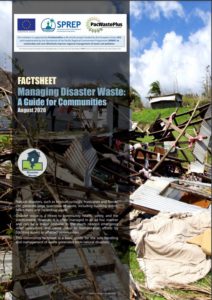
Factsheet
Managing Disaster Waste: A Guide for Communities
Natural disasters, such as tropical cyclones, hurricanes, and floods, can generate large quantities of waste, including building debris, fallen trees, and hazardous waste. Disaster waste is a threat to community health, safety, and the environment. However, it is often managed in an ad hoc manner and can be a major obstacle to the much-needed emergency relief operations and cause delay to humanitarian efforts by blocking access to affected communities.
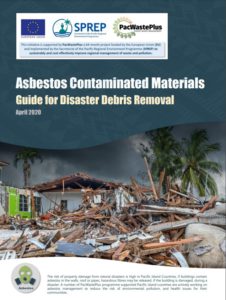
Booklet
Asbestos Contaminated Materials Guide for Disaster Debris Removal
The risk of property damage from natural disasters is high in Pacific Island Countries, if buildings contain asbestos in the walls, roof or pipes, hazardous fibres may be released, if the building is damaged, during a
disaster. A number of PacWastePlus programme supported by Pacific island countries are actively working on asbestos management to reduce the risk of environmental pollution, and health issues for their communities. This document is designed to provide guidance on response and management, and to supplement knowledge and skills – utilising this guide does not imply qualifications, and we strongly recommend
undertaking appropriate training and employing necessary protective measures prior to handling asbestos-containing materials.
Newsletter Subscription
Would you like to subscribe to our quarterly programme newsletter-The Connection?
We care about the protection of your data. Read our Privacy Policy.
Newsletter Signup
To sign up to our newsletter, enter the information below and we will add you to our mailing list for all future regional and project updates.
